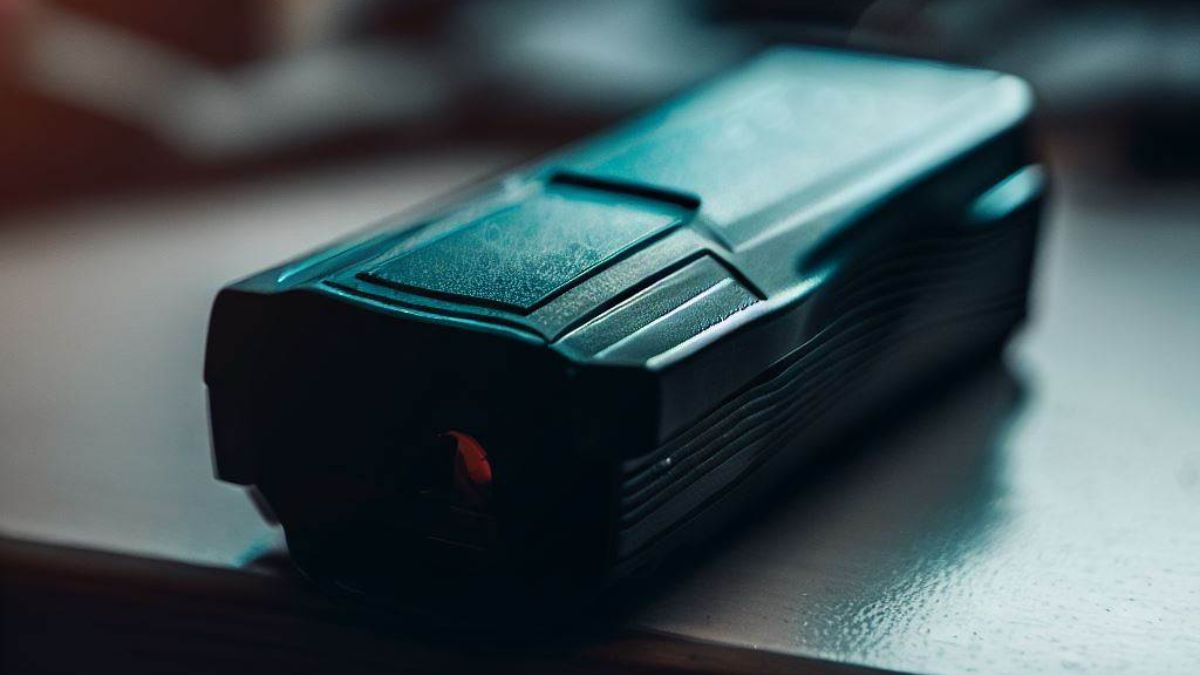Can You Bring a Taser on a Plane?

As participants in Amazon Associates and other programs, we earn from qualifying purchases. This comes at no additional cost to you. For more details, see our Affiliate Disclosure.
When it comes to air travel, there are many rules and regulations that passengers must follow. One question that often arises is whether or not it’s possible to bring a taser or stun gun on a plane.
This article will explore the topic in detail, providing information on the current regulations and guidelines for traveling with these devices.
Understanding TSA Regulations on Self-Defense Items
The Transportation Security Administration (TSA), the U.S. government agency that oversees security at airports, sets the regulations about what you can and cannot bring onto an airplane. The TSA’s primary concern is to maintain the safety of all passengers and crew members, which means that potentially harmful items are carefully controlled.
When it comes to self-defense items, the TSA has a detailed list of what is and isn’t allowed, both in checked and carry-on luggage. Some items are categorically prohibited, while others are allowed in checked baggage but not in the cabin. It’s essential to remember that these regulations can change, often in response to shifting security threats or advances in technology. Therefore, always checking the latest rules before packing your luggage is a wise move.
Specifically concerning tasers or stun guns, the TSA generally classifies these as personal self-defense items. They may be allowed under certain circumstances, but like all things related to air travel security, the specifics matter. In the following sections, we’ll delve deeper into the rules surrounding tasers on airplanes.
Specific Rules about Tasers in Carry-Ons and Checked Luggage
Tasers and stun guns fall into a specific category under the Transportation Security Administration’s (TSA) guidelines. These devices, used for personal protection, are generally prohibited in carry-on luggage but allowed in checked baggage under certain conditions.
When it comes to carry-on luggage, the TSA prohibits all items that could potentially incapacitate a person or animal, or pose a threat to aviation safety. This includes tasers and stun guns, regardless of their size or power output. So, if you’re planning on bringing a taser with you on your journey, it’s crucial to understand that you won’t be able to keep it with you in the cabin.
In contrast, tasers and stun guns are allowed in checked luggage. However, there are stringent rules in place. The devices must be safely protected from accidental activation, which means disabling features like batteries and ensuring the safety switch is in the “off” position. Additionally, airlines might have their own specific policies, and international rules may also apply, particularly when you’re flying to or from a country where tasers are illegal.
Therefore, while you can travel with a taser in your checked luggage, you must take steps to ensure that it’s safely stowed and deactivated.
The Consequences of Carrying a Taser onto a Plane
The consequences of attempting to bring a taser onto a plane in your carry-on can be severe, regardless of whether it was an honest mistake or not. Firstly, if a taser is detected during the security screening process, it will be confiscated immediately. This not only means you’ll lose the device, but you could also face additional questioning from TSA officers.
In certain cases, the event could lead to fines or civil penalties. The TSA has the authority to impose fines ranging from a few hundred to several thousand dollars, depending on the severity of the violation and whether it’s a repeat offense. While most cases result in a fine, it’s also possible for violations to result in a civil lawsuit or criminal charges, especially if the attempt to bring a taser onto a plane is part of a broader threat to aviation security.
In addition to these legal repercussions, attempting to bring a taser in your carry-on could cause significant delays to your travel plans. You may miss your flight due to extended security checks or questioning, leading to potential extra costs for rebooking your flight. In the worst-case scenario, you might be denied boarding altogether.
Lastly, there’s also the potential for a negative impact on your reputation. Being identified as a security threat at an airport can have serious implications, such as difficulties in obtaining a visa or other travel permissions in the future.
While it might seem like a good idea to have a taser close at hand on a flight, the potential consequences make it clear that it’s not worth the risk. The rules are strict, and the penalties for breaking them can be severe.
Alternative Self-Defense Items Allowed on Airplanes
While tasers and stun guns are strictly regulated on airplanes, there are other self-defense items that you can legally bring on board, either in your carry-on or checked luggage. Here are a few examples:
- Personal Safety Alarms: These are allowed in both carry-on and checked luggage. They can be a good way to attract attention if you feel threatened.
- Pepper Spray: Small canisters of pepper spray (less than 4 fluid ounces) are permitted in checked luggage, but they must have a safety mechanism to prevent accidental discharge.
- Tactical Pens: These dual-purpose writing instruments can also be used as a self-defense tool. While these are generally allowed, it’s best to check with the TSA or your airline, as interpretation can vary.
- Small Personal Items: Everyday objects like a ballpoint pen or a rolled-up magazine can serve as an improvised self-defense tool in an emergency. These are, of course, permitted on planes.
- Whistles: A whistle can help attract attention in an emergency situation. They are permitted in both carry-on and checked baggage.
Regulations can change, and what’s allowed on a plane in the U.S. might not be permitted in other countries. Always check the most recent guidelines from the TSA and consult with your airline before you pack. Also, even permitted items should be used with discretion and only in true emergencies, as misuse can lead to penalties.
Important Tips for Safe and Legal Travel with Self-Defense Tools
Navigating the regulations for travel with self-defense tools can be tricky. However, here are a few key tips to ensure that your journey remains hassle-free and within the bounds of the law:
- Check the TSA Website: The TSA’s website provides a comprehensive list of items that are allowed and prohibited, both in carry-on and checked luggage. This list can change, so it’s important to check it every time you travel.
- Consult with Your Airline: Airlines can have additional rules beyond what the TSA stipulates. It’s always a good idea to get in touch with your airline’s customer service before packing any self-defense items.
- International Considerations: If you’re traveling internationally, remember that the rules can vary by country. What’s legal in the U.S. might not be permitted elsewhere. Research the regulations in your destination country to avoid any legal issues.
- Properly Pack and Secure Your Items: If you’re allowed to travel with a certain self-defense tool in your checked luggage, make sure it’s properly secured and cannot accidentally activate.
- Don’t Improvise: If an item isn’t explicitly listed as allowed, don’t risk it. The TSA takes potential security threats very seriously and can impose heavy penalties for violations.
- Respectful Use: Even permitted items should be used respectfully and responsibly. Causing alarm or discomfort to other passengers can lead to penalties and potential legal issues.
- Be Prepared to Surrender Items: In ambiguous cases, TSA officers have the final say on whether an item is allowed on a plane. Be prepared to surrender an item if instructed to do so.
By following these tips, you can ensure that you’re taking the necessary precautions when traveling with self-defense tools. Always prioritize the safety of yourself and others, and respect the rules set out by the authorities.






